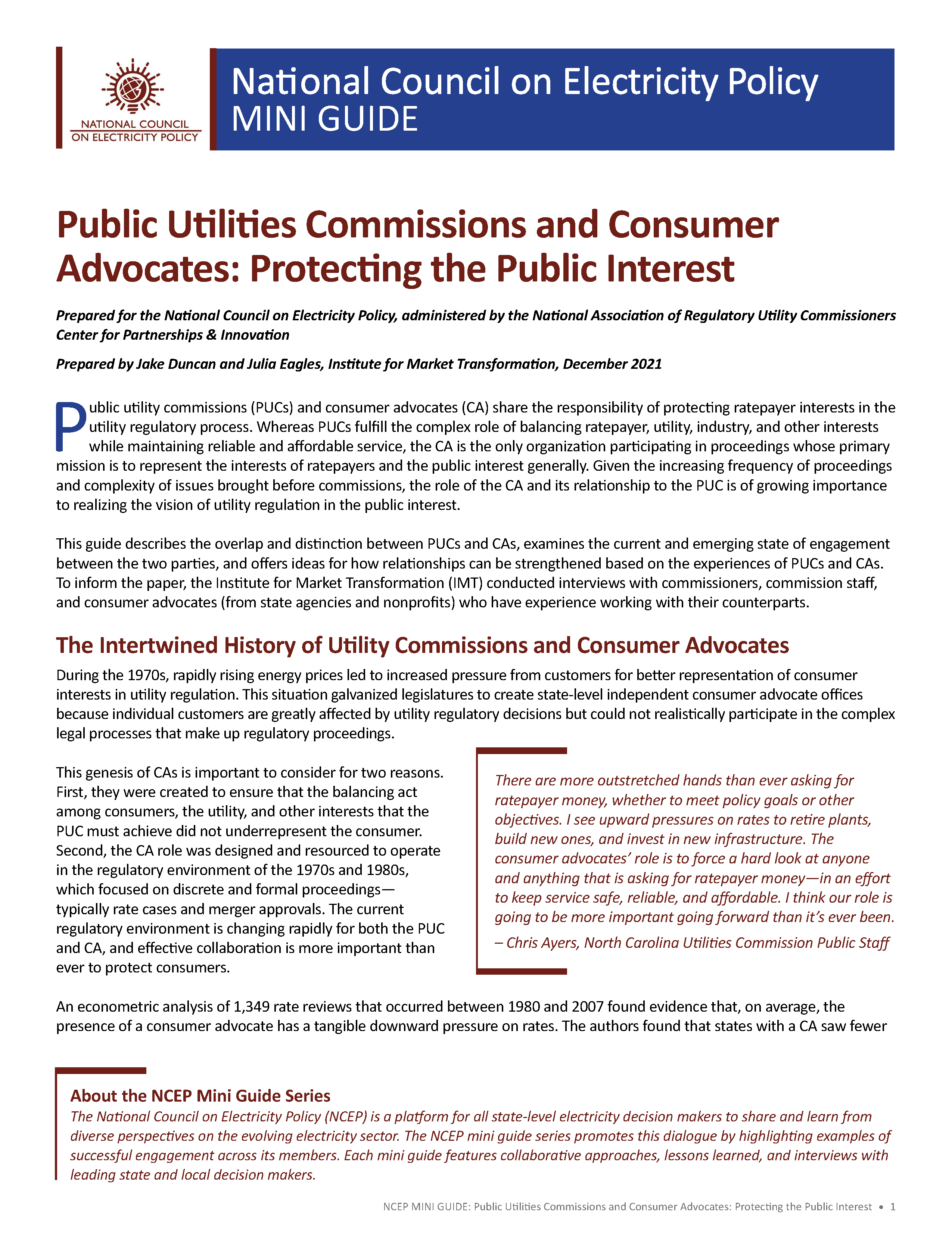Public utility commissions (PUCs) and consumer advocates (CA) share the responsibility of protecting ratepayer interests in the utility regulatory process. Whereas PUCs fulfill the complex role of balancing ratepayer, utility, industry, and other interests while maintaining reliable and affordable service, the CA is the only organization participating in proceedings whose primary mission is to represent the interests of ratepayers and the public interest generally. Given the increasing frequency of proceedings and complexity of issues brought before commissions, the role of the CA and its relationship to the PUC is of growing importance to realizing the vision of utility regulation in the public interest.
In this miniguide, prepared for the National Council on Electricity Policy, authors Julia Eagles and Jake Duncan describe the overlap and distinction between PUCS and CAs, examines the current and emerging state of engagement between the two parties, and offers ideas for how relationships can be strengthened based on the experiences of PUCs and CAs.
